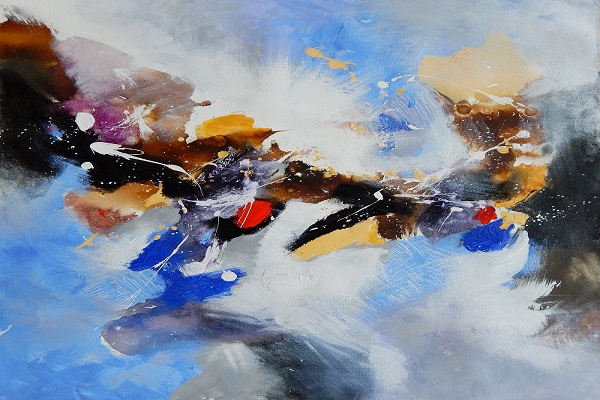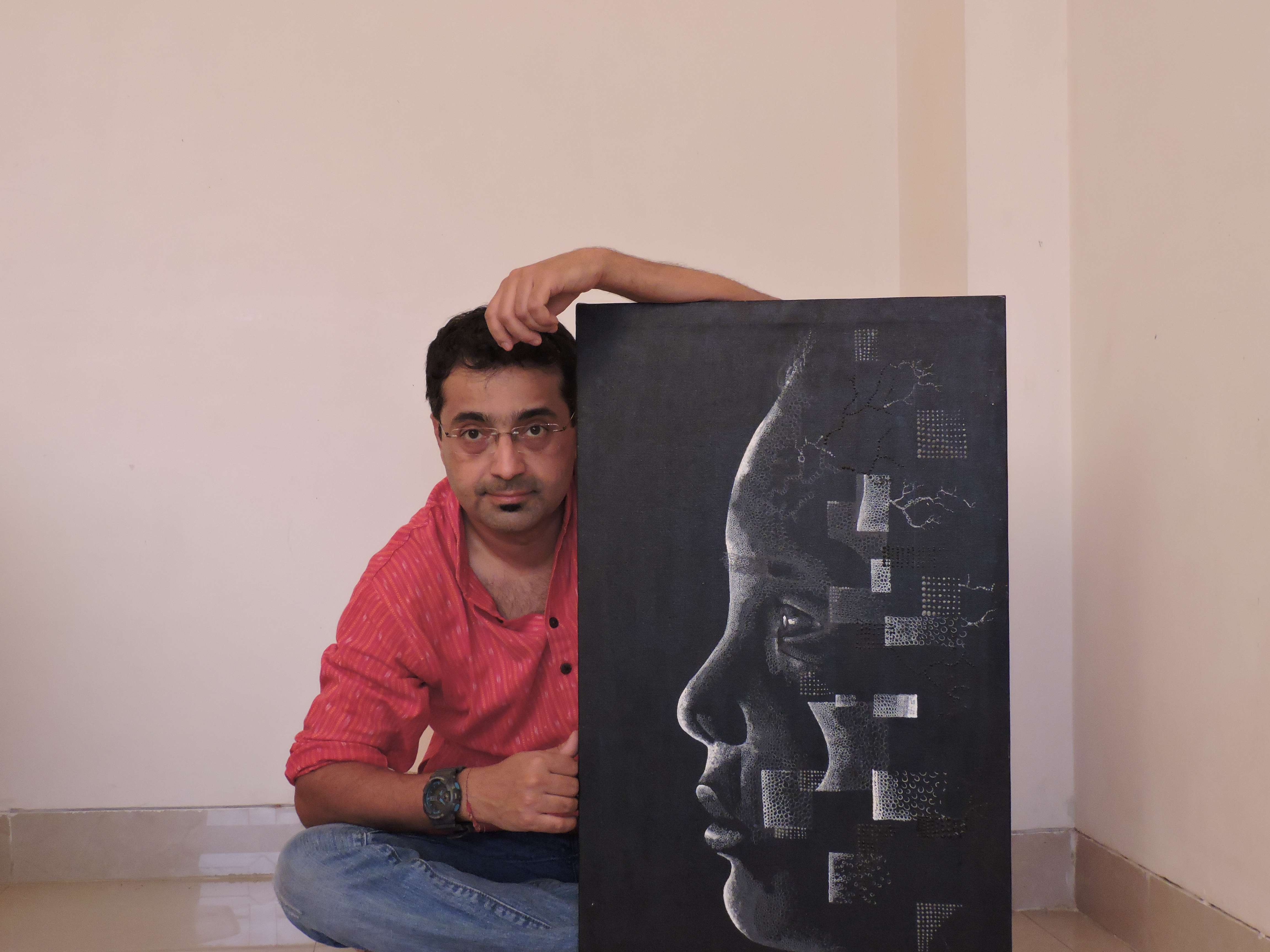
Steve Jobs, the innovator, the genius, the vanguard founder of one of the most premier technology companies in the world – Apple, loved art.
He liked art so much that while he was at Reed college (although he dropped out in 1973, he occasionally hanged around the campus), he attended the calligraphy classes.
Science is all about the physical process whereas Art tells us about human experiences.
Although some experts don’t agree with this statement.
Take for instance the noble prize winner neuroscientist, Eric Kandel, who referred in one of his books that the line that distinguishes art and science no longer exists.
Abstraction – A repercussion of human’s curiosity
The rise of abstract art paintings in the art community was directly influenced by the human’s characteristic to do more.
Prominent abstract artists such as Jackson Pollock, Kooning, Mark Rothko, etc, designed crisp angles of visual processing because they weren’t content with the conventional methods of creating art.
The best of abstract art experts tell that this specific form opens up a whole new world of imagination and visual to artists that are only possible when science and art complement each other supportively.
A simple figurative painting offers our brain with a clearer comprehension of the objects as we can relate it with our real-life experiences directly.
Abstraction, on the other hand, offers our brain a completely new way of seeing things that we haven’t seen or experienced before.
Our brain, when exposed to abstract artworks, experiences the visual ecstasy of patterns, colours, lines, and light by engaging different parts of our minds.
Abstract art pieces are known to brace more ingrained responses than what our brain normally generates.
In simpler words, Abstract art does offer a thrust to our creativity.
The Conjunction of Art and Science
Is art connected with science?
That’s a good thought to debate on. But what is the reality?
When I was a kid, I always thought that artists and scientists are two very different people who work on totally contrasting job profiles and had far-away objectives.
But this isn’t true.
A doctor, who is treating schizophrenia or depression patients, puts up abstract art paintings in his/her office.
A philosophy teacher always encourages students to witness more abstract works so as to open up new possibilities and perceptions of life.
Similarly, abstract artists have always experimented with their techniques just like scientists.
Artists also aren’t aware of the end product before experimenting, just like the scientists.
The Scientific Course of Abstract Art
Abstraction is one of the instrumental movements in the art world to date. Why?
Because it encouraged artists to explore roads that were never navigated before. Never before had artists ever played with the techniques of art creation.
And from where did the inspiration come?
Abstract artist like Jackson Pollock tried a number of methods and adopted the trial-and-error method to finally end up with the prominent ‘drip painting’ technique.
Similarly, Rothko also emphasized mainly on the piousness of colours rather than what will be the end product.
All these experimentation traits are similar to that of scientists. The similarities between artists and scientists are hence becoming more apparent.
Why emotional response is more vigorous with abstract art paintings?
It is true!
Try yourself. Give a good 4-5 minutes glance at an illustrious figurative art painting. Now, observe an abstract art piece for the same amount of time.
You would notice that when you look at figurative art, your brain is used to such images due to your personal visual experience of real life.
However, looking at an abstract painting would demand more of your imagination. That is why creative people (of any industry) are more inclined towards abstract in particular.
Abstract artworks, with their vivid and enigmatic representation of colours, lines, dots, designs, and light effect have the ability to dig out hidden emotions out of us.
What is our brain’s approach?
When you first see a painting, are you able to grasp its tiniest detail? Maybe not but still we are highly familiar with the objects we have earlier experienced in life.
In his book, ‘Art and Illusion, A Study in the Psychology of Pictorial Representation’, Ernest H. Gombrich, the British art historian first pointed out that when you look at a painting, all you can visualise is the light that is reflected of the canvas.
However, this theory didn’t state how artists are able to comprehend the exact figures while crafting a figurative piece or how art lovers can interpret the hidden meaning in an abstract art painting.
To fill this void, Hermann Ludwig Ferdinand von Helmholtz, a renowned German physicist, and physician, found that apart from the reflected light, there are two major approaches taken by our brain when looking at art.
These are a bottom-up and top-down approach.
The bottom-up process is in-built inside our mind and is derived from the thousands of years of evolution that our brain has gone through.
Our brain, seeing an incomplete figure or object, completes it with more than 98% accuracy because of the clues (with minimum information) that are already present in it.
This is what makes the human brain a phenomenal machine.
Now, the top-down process is what life offers us through different experiences. The things we learn through varied situations of life and that are not in-built inside our brain are interpreted through the top-down process.
In the same context, when we look at different abstract art paintings, our brain takes the top-down approach, where we through consistent learning and our personal life experience digs out meaning out of artworks.
Experts have told that this top-down approach is what makes us more creative.
The Final Statement
Human’s brain reaction to abstract art pieces is an epitome of how uncertainty and ambiguousness can really get our creative juices flowing.
Maybe some of you might not like abstract paintings and that’s totally fine but the spirited flair that expands our imagination and our perception towards the world is surely the biggest benefit of abstract art.
Next time, when you see an abstractionist looking to sell art online, talk to him/her and see how stretched their mind and perspective has become.
For questions and suggestions, reach in the comment box below. Thanks!





















